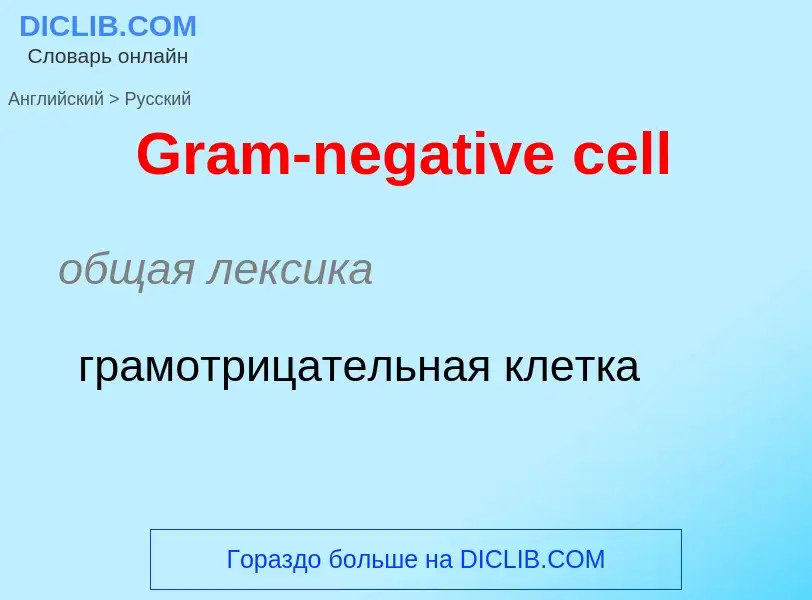Перевод и анализ слов искусственным интеллектом ChatGPT
На этой странице Вы можете получить подробный анализ слова или словосочетания, произведенный с помощью лучшей на сегодняшний день технологии искусственного интеллекта:
- как употребляется слово
- частота употребления
- используется оно чаще в устной или письменной речи
- варианты перевода слова
- примеры употребления (несколько фраз с переводом)
- этимология
Gram-negative cell - перевод на русский
общая лексика
грамотрицательная клетка
общая лексика
грамотрицательная бактерия
общая лексика
грамотрицательный
Википедия

Gram-negative bacteria are bacteria that do not retain the crystal violet stain used in the Gram staining method of bacterial differentiation. They are characterized by their cell envelopes, which are composed of a thin peptidoglycan cell wall sandwiched between an inner cytoplasmic cell membrane and a bacterial outer membrane.
Gram-negative bacteria are found in virtually all environments on Earth that support life. The gram-negative bacteria include the model organism Escherichia coli, as well as many pathogenic bacteria, such as Pseudomonas aeruginosa, Chlamydia trachomatis, and Yersinia pestis. They are a significant medical challenge as their outer membrane protects them from many antibiotics (including penicillin), detergents that would normally damage the inner cell membrane, and lysozyme, an antimicrobial enzyme produced by animals that forms part of the innate immune system. Additionally, the outer leaflet of this membrane comprises a complex lipopolysaccharide (LPS) whose lipid A component can cause a toxic reaction when bacteria are lysed by immune cells. This toxic reaction may lead to low blood pressure, respiratory failure, reduced oxygen delivery, and lactic acidosis – manifestations of septic shock.
Several classes of antibiotics have been designed to target gram-negative bacteria, including aminopenicillins, ureidopenicillins, cephalosporins, beta-lactam-betalactamase inhibitor combinations (e.g. piperacillin-tazobactam), Folate antagonists, quinolones, and carbapenems. Many of these antibiotics also cover gram-positive organisms. The drugs that specifically target gram-negative organisms include aminoglycosides, monobactams (aztreonam) and ciprofloxacin.


